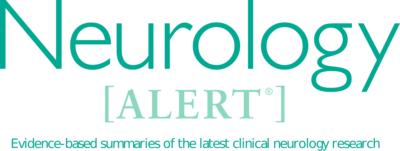
Neurology Alert – February 1, 2024
February 1, 2024
View Issues
-
Can Young-Onset Dementia Be Prevented?
In this large, population-based prospective cohort study, the investigators identified 15 risk factors that have strong associations with young-onset dementia. Modifications of these risk factors might delay the onset of, or prevent the development of, young-onset dementia.
-
A Comparison of Acute Migraine Therapies Using Big Data
In a big data-driven observational study that compared 3 million treated migraine attacks captured from a migraine diary smartphone app, triptans were found to be the most efficacious treatment class. Among the triptans, eletriptan had the highest rate of success. Consistent with clinical practice and recent consensus statements, the success of triptans was followed by ergots and antiemetics.
-
Myopathy with Elevated Aldolase and Normal CK: Differential Diagnosis
Elevated serum creatine kinase (CK) is considered the hallmark of myopathy, yet some patients with biopsy-proven myopathy have normal CK with elevated aldolase, a less-specific marker of muscle disease. Most of those cases ultimately prove to be dermatomyositis.
-
Cerebral Amyloid Angiopathy Is a Risk Factor for Subdural Hemorrhage
In this large, observational population study using databases from the UK Biobank and the All of Us research program, spontaneous subdural hemorrhage occurred more often in patients with cerebral amyloid angiopathy compared to a matched control group.
-
The Optic Nerve as Part of the Diagnostic Criteria for Multiple Sclerosis
A recent prospective study showed that including the optic nerve as an additional topographic area in multiple sclerosis diagnostic decision-making improves sensitivity and diagnostic performance compared to the McDonald 2017 criteria: 92.5% sensitivity of the modified criteria vs. 88.2% of the current criteria.
